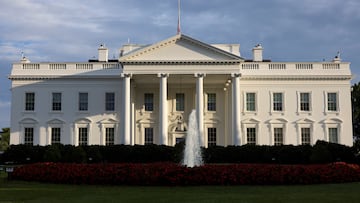Electoral College map: What makes a swing state?
A look at the Electoral College and what gives some states more power to elect the US President.


Rather than electing the president using the popular vote, in the United States, the Electoral College officially elects the president. The Electoral College was created in 1787 as a compromise between members of Congress choosing a president and qualified citizens voting. According to the Brennan Center for Justice, this was partly because the Founding Fathers were uncomfortable giving power to the people. Additionally, leaders from Southern states, where the number of slaves was high and the number of eligible white men to vote low, were worried that the popular vote would give too much power to Northern states. The system was engineered to empower the white South in times of slavery. Today, it is still seen as a flawed system, contrary to the ‘one person, one vote’ principle of democracy.
How does the voting system work?
The Electoral College has 538 members. To be elected president, a candidate must win at least half plus one, or 270 electoral votes.
Each state has the same number of electors as its representatives in Congress (the House and the Senate combined). Every state has two votes for its Senators plus the number of votes equal to its Congressional districts.
Following an election, the electors vote for the presidential candidate, guided by the winning popular vote across the state. This year, the vote will take place on December 14. When you vote in a general election, you vote for your candidate’s electors.
How does the Electoral College affect presidential elections?
There have been six presidential elections in this century: 2000, 2004, 2008, 2012, 2016, and 2020. The Republican party won the White House in half of those elections but only won the popular vote once (George W. Bush in 2004). The Electoral College currently grants an advantage to the Republicans, but that trend might be shifting as states like Georgia and Texas trend leftward.
In the 2016 election, Hillary Clinton won nearly 3 million more votes nationally than Donald Trump, but because Trump secured 77 more electors than Clinton, in part due to narrow Trump victories in Michigan, Pennsylvania, and Wisconsin (77,744 votes in total), he still won the presidency.
This was possible because the number of Electoral College members matches the number of state members of Congress, and these aren’t representative. The number of congressmen assigned to each state in the House of Representatives hasn’t changed for over a century, so today, there is one voting member for every 747,000 Americans, more than triple the original ratio.
However, this elector-to-voter ratio is an average. The fundamental flaw in the system is that it varies wildly from state to state. This means that individual voters in some states hold more real power than others. Voters in Wyoming, for instance, have nearly four times as much influence as Californians do. For example, Montana’s 1,050,493 people have just one House member. Still, Rhode Island, a state with only 9,000 more residents, is tipped into the bracket of having two House representatives, one for every 529,820 citizens. Suddenly, every resident of Rhode Island has almost double the power compared to someone living in Montana. Many less populated states are not considered swing states as they tend to vote for the same party in elections after election. However, there is another group of states, those that are more populated and have switched their performances various times over the last three decades. These voters have the greatest say, thanks to the Electoral College.
2024 New Hampshire GE:
— Political Polls (@Politics_Polls) August 21, 2024
Harris 52% (+5)
Trump 47%
.
Harris 50% (+7)
Trump 43%
Kennedy 4%
Oliver 0%
Stein 0%
.@UNHSurveyCenter, 2,048 LV, 8/15-19https://t.co/NYRQNKBFen
What are the battlegrounds for the 2024 Election?
This year, both campaigns are looking at Arizona, Florida, Georgia, Michigan, North Carolina, Ohio, Pennsylvania, and Wisconsin.
2024 Wisconsin GE:
— Political Polls (@Politics_Polls) August 21, 2024
Harris 48% (+1)
Trump 47%
.
Harris 46%
Trump 46%
Kennedy 4%
Stein 1%
West 1%
.@Rasmussen_Poll, 1,099 LV , 8/13-19 https://t.co/83LLeNfpKj
Related stories
In 2020, Donald Trump won Florida, North Carolina, and Ohio. Michigan, Pennsylvania, and Wisconsin had all been lost by Hillary Clinton in 2016, but flipped blue once again in 2020. To hold onto the White House, Democrats cannot afford to those three states, and if they do, they need to start looking at electoral college votes elsewhere.
Florida, a state many Democratic strategists had kissed goodbye as a possible 2024 contender, has seen VP Harris make up nearly a point in the polls since early August. The Sun Shine state and Ohio went for George W. Bush in 2002 and 2004, Barack Obama in 2008 and 2012, and Donald Trump in 2016 and 2020.
Complete your personal details to comment